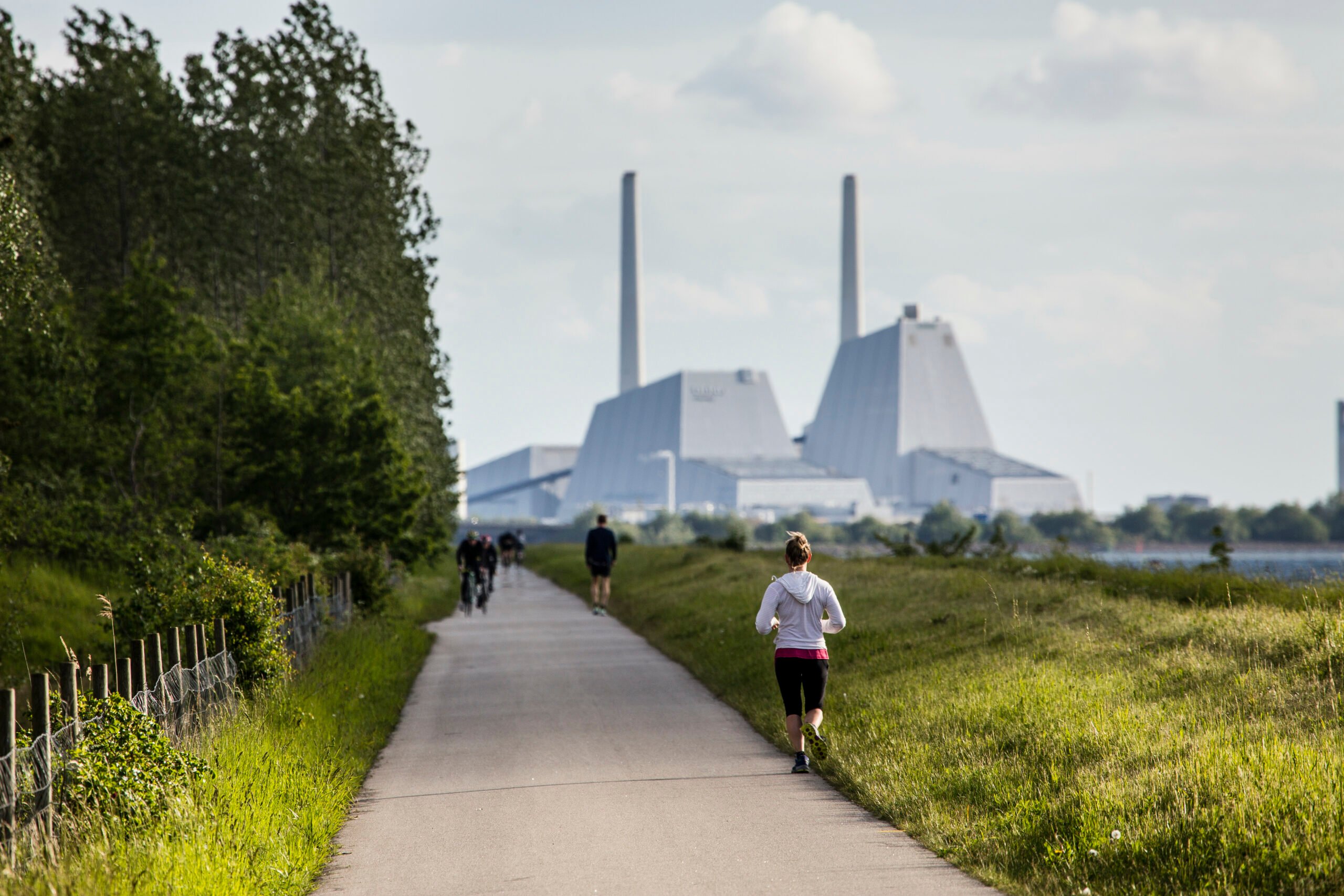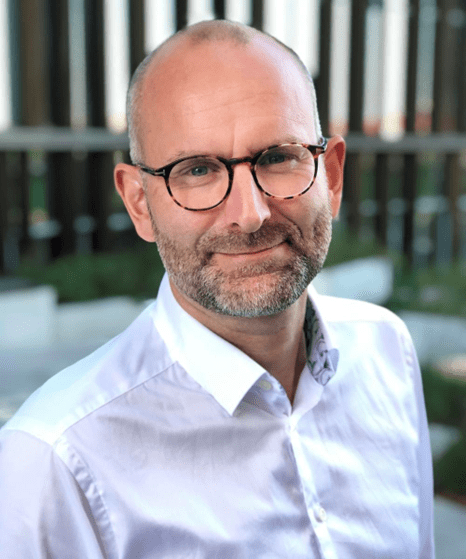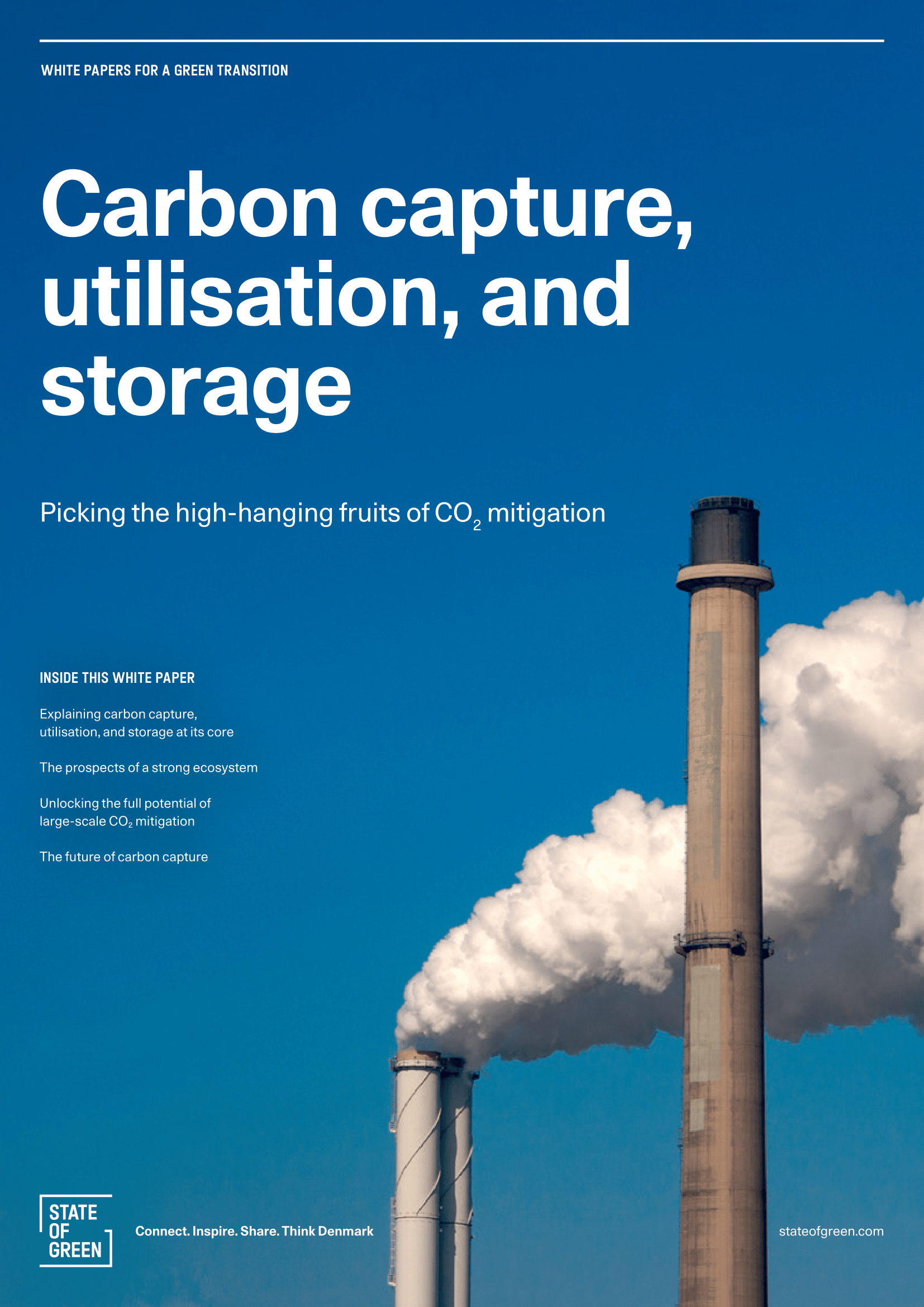Kristoffer Böttzauw
Director General of the Danish Energy Agency.
Perspective
Carbon capture, storage and utilisation



Director General of the Danish Energy Agency.
CCUS is a core technology in the Danish green transition on the road to Denmark’s 70 percent reduction target, and onwards to climate neutrality by 2050. At the same time, utilisation and storage of CO₂ has the potential to ensure a just transition by supporting employment in the same local areas, and for some of the same professional groups, as the oil and gas sector previously provided.
The Danish ecosystem has unique conditions for capturing, utilising, and storing CO₂. The Geological Survey of Denmark and Greenland (GEUS) calculates that the Danish subsoil can contain up to 22 billion tonnes (GT) of CO₂. This corresponds to between 500 and 1000 years of total Danish emissions at the current level – more than enough for other countries to exploit as well.

This article is part of the publication “Carbon capture, utilisation, and storage.
Download the publicationCarbon capture and storage (CCS) is neither an unknown nor untested technology. On the contrary, for well over 100 years, technologies that can capture CO₂ have been used.
Since the 1920s, the air has been purified of CO₂ in submarines and since the 1960s in spacecraft. By utilising the captured CO₂ (CCU) – combining it with green hydrogen – e-methanol and e-kerosene can be made for fuelling our heavy industry, maritime fleet, and aviation. Green hydrogen can be made with clean power from wind turbines through the electrolysis of water.
The Intergovernmental Panel on Climate Change (IPCC) and the Danish Climate Council point to CCUS as an important means of fulfilling the Paris Agreement. Both because it can help decarbonise hard-to-abate emissions, and because it can remove CO₂ from the atmosphere through the capture and storage of biogenic CO₂.
It is not small things that are needed. According to the International Energy Agency (IEA), by 2060 we must capture and store more than 100 billion tonnes of CO₂ in total to meet global climate and energy goals.
Denmark accounts for 0.1 percent of global CO₂ emissions. In driving the global path to net zero, Denmark’s national efforts can offer great inspiration. Inspiration that stands on the shoulder of societal efforts, underlining why public-private collaboration is essential in the quest to develop technologies, policies, and partnerships to accelerate the green transition. That is why we share our experience from the Danish energy transition with 24 countries across the world.
By partnering with some of the world’s biggest emitters, and fastest-growing economies, we put our expertise to use where it holds the greatest impact. We focus our efforts on Danish core competencies within energy transition.
This whitepaper shows how Denmark is geared to reap the benefits of carbon capture, utilisation, and storage, and how the efforts can drive the green transition globally by working together.
I hope you will feel inspired.